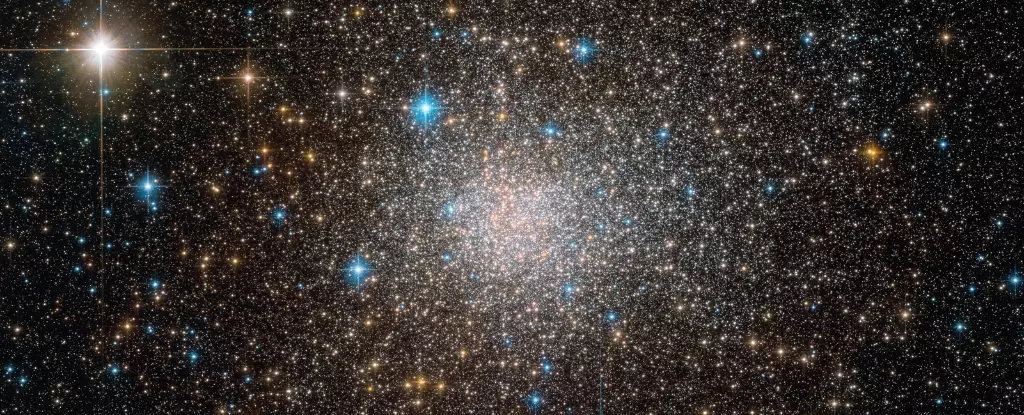Delving into the depths of cosmic mysteries, a team of researchers turned their attention to Terzan 5 – a dense star cluster hurtling through our galaxy at incredible speeds. This unique celestial laboratory provided an opportunity to study cosmic rays, high-energy particles that have perplexed astronomers for over a century. Through their observations of the radiation emanating from Terzan 5’s cosmic rays, the researchers achieved a groundbreaking feat: measuring the rate at which these particles change direction due to fluctuations in interstellar magnetic fields.
In the early 20th century, the discovery of cosmic rays unveiled a realm of high-energy particles originating from outer space. Initially, scientists believed that all sources of radiation were confined to Earth. However, in 1912, physicist Victor Hess’s groundbreaking balloon experiment revealed significantly higher radiation levels at high altitudes, indicating an extraterrestrial source. These cosmic rays, consisting of atomic nuclei and particles accelerated to near-light speeds, traverse interstellar space, their trajectories influenced by magnetic fields encountered along the way.
Charged cosmic particles exhibit a magnetic deflection effect, akin to the technology employed in old cathode ray tube (CRT) monitors, where electrons are steered towards the screen by magnetic fields. The dynamic nature of interstellar magnetic fields causes cosmic rays to scatter in random directions, dispersing almost uniformly throughout the galaxy. While Earth receives cosmic rays from various directions, the mechanisms governing their movement remain shrouded in mystery.
Terzan 5 emerges as a key player in the cosmic narrative, boasting a rich population of millisecond pulsars that accelerate cosmic rays to extreme velocities. Despite not reaching Earth, these cosmic rays leave a distinctive imprint by generating gamma rays upon colliding with starlight photons. Interestingly, the gamma rays originating from Terzan 5 do not align precisely with the positions of the stars, raising questions about their source.
This star cluster’s trajectory, weaving through the galaxy at high velocities, results in the accumulation of magnetic fields akin to cometary tails. Cosmic rays emitted by Terzan 5 initially follow this magnetic tail, with gamma rays produced along their journey. However, fluctuations in magnetic fields cause the cosmic rays to gradually realign their trajectories towards Earth, culminating in the visibility of gamma rays after a significant delay of around 30 years.
Through the lens of Terzan 5, researchers have been able to unravel the intricate interplay between cosmic rays, magnetic fields, and galactic dynamics. This newfound insight has paved the way for measuring the timescale of magnetic fluctuations impacting cosmic ray directions, offering a pathway to test prevailing theories concerning interstellar magnetic fields. With each discovery, we edge closer to deciphering the enigmatic radiation from space that has captivated scientists for over a century.
The cosmic ballet orchestrated by celestial bodies like Terzan 5 provides a glimpse into the intricate tapestry of the universe, offering a window into the unseen forces that govern our cosmic environment. As researchers continue to probe the depths of space, each revelation brings us closer to unlocking the secrets of the cosmos and understanding the fundamental mechanisms driving the phenomena that shape our universe.


Leave a Reply